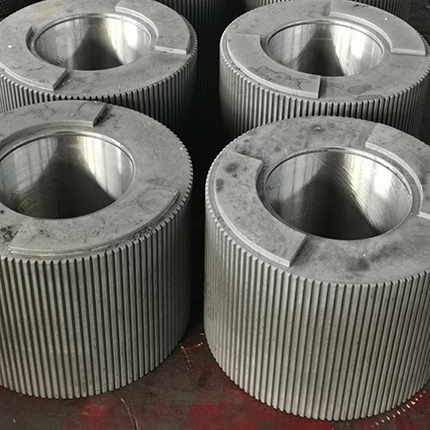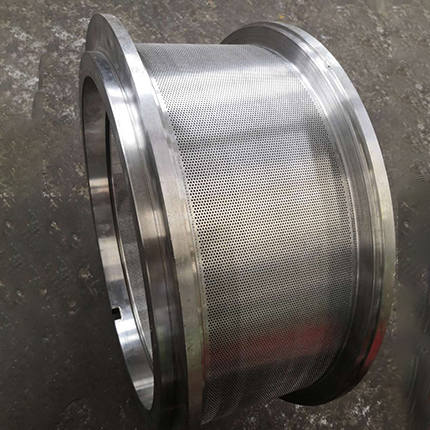There are three types of pellet feed presses: ring die pelletizer, flat die pelletizer and spiral push pelletizer. The ring mold granulator is the most widely used. According to my country's industry standard SB/T10114-92 "Ring Die Granulator" and other three standards, the granulator specifications are expressed by the inner diameter of the die (cm) × effective width (cm) and the main motor power (kW). The model consists of four parts: professional code, variety code, type code and specifications. example:
When using the standard test method and feed formula of SB/T10114, and the diameter of the ring die die hole is 3 mm, the technical performance of the ring die pelletizer should reach the following indicators:
1. The pure working hour productivity (kg/h) meets the predetermined requirements.
2. Power consumption per ton of pressed material (kw·h/ton): when the main motor power N=
22 kWh, ≤20; N≤37 kWh, ≤18; N≤55 kWh, ≤16; N≥75 kWh, ≤14.
3. The service life of the die and roller: When the broiler feed is used to press the die hole diameter of 5 mm, the service life of the die and roller should not be less than those specified in Table 1-4.
The die and the roller are the most import ant working parts of the granulator. Due to their high requirements on materials, processing and heat treatment, they have a decisive influence on the quality, output and cost of the granules. The price of the die and the pressure roller is high, and it is also a wearing part, so it is highly valued.
4. The molding rate of pellet feed should be ≥95%. The molding rate refers to the percentage of the weight of the shaped granules in the pressed granules.
5. Pulverized feed powdering rate ≤10%. A high pulverization rate indicates that the feed pellets are not solid enough. In the transportation, storage and feeding of pellets, the increase of powder will cause loss.
6. Granulator noise: when the main motor power cluster is 37 kWh, the sound power level noise is ≤100 dB(A); N>37 kWh, noise ≤110 dB(A).
7. The dust concentration of the granulator is ≤10 mg/m³.
8. The load level of the granulator is ≥85%.
In addition, it also puts forward basic requirements for the granulator in terms of structure, control, reliability, automatic interlocking and overload protection, adjustment, use and operation, lubrication function, and safety protection.





 QQ Customer Service
QQ Customer Service